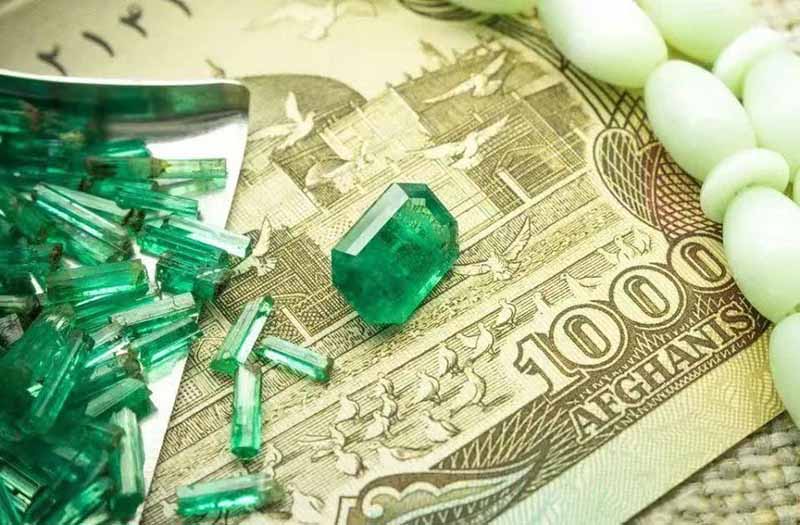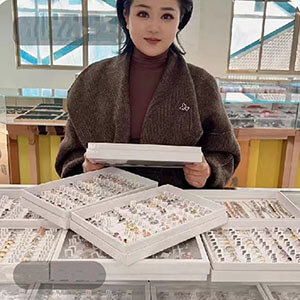In the gem circle, there is a beautiful gemstone with a very high “oil content”. People’s value can be up to ten million level, even the auction also often appear its figure, why to some people, the treatment has changed?

Above, a Cartier emerald ring set with a 12.35 carat weight of micro-oil (minor) emerald. The ring from Colombia fetched $304,800 at auction.




The brooch sold for $6,578,500 at Christie’s in 2011. The emerald in the necklace pictured above is at least 300 years old.
Originally set in a brooch, it was collected by the Russian Tsars, and was given to Ekaterina II when she married into the Russian royal family. And has since been passed down through the hands of the Russian Tsars.


After passing through the hands of several tsars, the emerald was given by Tsar Alexander II to his daughter-in-law, Grand Duchess Vladimir. Upon her death, the Grand Duchess left the emerald to her son Boris. Boris sold the emerald to Cartier, who set it in a necklace for Edith Rockefeller McCormick.
After her death, Cartier bought it back and sold it again to Barbara Hutton.
In 2019, the emerald diamond necklace was featured in a Christie’s auction. At the time, the emerald weighed 75.61 carats and was certified by Gubelin as being of Colombian origin, although it had a minor oil content. It sold for CHF 4,335,000.
Why emeralds need to be oiled:

1. To protect the emerald
Jewelry fans who are aware of the oiling process know that emeralds, in addition to their extreme beauty, also have a large number of inclusions and fissures.
This is due to the fact that when an emerald forms crystals deep in the earth’s crust. It is surrounded by water or other natural liquids and minerals that get trapped inside the emerald as it crystallizes.
When an emerald is cut, some trace amounts of the liquid are released from the surface, creating the fissures that you see.
This, coupled with the special crystal structure of the emerald, causes it to be highly brittle and very prone to shattering after an unfortunate impact at an angle.
Therefore, when mining, the miners would soak the emeralds in a bucket of oil.
If the emerald has fissures, the oil will soak along the fissures.
Even if the emerald has no fissures, the lubricating and cushioning effect of the oil prevents them from breaking against each other.
As far back as ancient Egypt, the process of filling this marvelous gemstone was recorded in scrolls and other ancient documents to protect emeralds.

2. Making emeralds look better
When buying a natural gemstone, many jewelry aficionados want the stone to have a beautiful color, clean crystals, and an affordable price. But these 3 items usually can’t be present at the same time.
After all, most natural gemstones contain fissures, inclusions, etc. due to growth, and purity is extremely rare.
In order to satisfy consumer demand for gemstones, the market improves the quality of the stones and sells them at a price that corresponds to their quality. The optimization of emeralds is known as “oiling”.
The refractive index of the substance used for oiling is very close to that of the emerald.
Optics are used to fill in the natural liquid that has been in the emerald for millions of years.
This makes the cleavage in the emerald less noticeable and more beautiful to look at.
The vast majority of emeralds sold on the market today have been oil-filled. This process is usually taken care of before cutting.


If an emerald is oil-free, there are probably two scenarios: one is that the emerald is of very high clarity and does not have a lot of visible fissures that require oiling.
The other is that the emerald is of very poor quality and not good enough to be worn as a gemstone. Even if it was oiled, there was no point in simply selling it at a bargain price.
Although we all have oil, but also divided into what oil~
Oil injection is also divided into good oil and bad oil:
According to whether the oil contains color, can be divided into colorless oil and colored oil.
At present the international for injection colorless oil emerald is recognized, for injection of colored oil emerald is not recognized.
1. Colorless oil:
The substances used for oil injection were indeed oils in the early days, and most of them were natural oils. For example, the traditional “oil” cedar oil, linseed oil, canola oil, baby oil, paraffin oil and so on.


But these oils are less resistant, some ten days and a half months to evaporate.
At present, the newly mined emerald, has not been popular with this material.

With the progress of technology, people will choose the resin type for emerald oiling.
The effect is more stable and durable, and it is the mainstream oiling material at present.
Because the colorless oil only improves the clarity of the emerald, and does not change its essential color and gemstone nature.
And it can be safely removed without causing damage or any adverse effects on the gemstone, so it is internationally recognized as a means of gemstone optimization.

2. Colored oils:
In addition to colorless oils, some merchants will inject a large amount of colored resins, polymers or glassy substances into the cracks of emeralds that are light in color and have more inclusions.
This not only improves the color, but also minimizes the visibility of the inclusions, making the emerald look very rich and green to the naked eye.
Filling with tinted oils, which largely changes the color of the stone itself, is not an accepted treatment for gemstones on the international market. And these emeralds are generally considered to be of low value.


Does oiling affect the value of an emerald:
While everyone’s preference for gemstones may vary, the following are the key factors that affect the value of an emerald.
They are also the directions that you should focus on when purchasing an emerald.
1. Factors that determine the value of an emerald:
The most important is the color: basically 70% of the money spent on an emerald is paying for its color.
The most valuable emeralds exhibit a bright, rich green color.


The color should be saturated and not too dark or black. Rich shades of green and hints of blue are very beautiful. An even distribution of color gives an emerald a higher value.
Weight:
The bigger the stone, the better, and emeralds are no exception. On a budget, if the color of an emerald meets your requirements, then go for the weight you want.
Large carat quality emeralds are rarer and more expensive than smaller weights. Clarity to the naked eye: emeralds usually have a large amount of inclusions.

While this is an internal characteristic that develops during their growth, emeralds with higher clarity and fewer visible inclusions are more valuable.
High-quality emeralds tend to have good clarity.
Cutting and shaping:
A well-cut emerald reveals more of its color and brilliance.This is to bring out the best in it, and to a certain extent makes it look more beautiful.
Origin:
Colombia is known for its production of high quality emeralds and is therefore more valuable. However, Zambia, Brazil and Afghanistan also produce very good quality emeralds (of the same quality) at a fraction of the price of those from Colombia.
Above these items, emerald color, size, cut, we can be very intuitive feel.
But the clarity of the oil injection is presented in front of everyone, so it is injected with oil before the quality of how, is not directly with the eyes to feel. At this time, we have to rely on the appraisal organization to give the “amount of oil”, to judge the value of the emerald.
(High-value emeralds of larger carat size usually come with a certificate of oil grading; while small-priced emeralds usually do not.


2. The amount of oil in an emerald:
Most international organizations grade emerald colorless oiling as None, Insignificant, Minor, Moderate, or Significant.
As the degree of oiling increases, the clarity of the stone decreases, and so does its value.
In the case of an emerald of 1 carat or more, the price difference between an oil-free emerald and a slightly oiled emerald is already very large, all other qualities being equal.

3. Oil-filled emeralds can be bought:
Oil-free, clean emeralds are very rare, therefore, the vast majority of emeralds are oiled. In other words, if you have a limited budget, then you can buy small emeralds that are oiled. And the amount of oil can be even without any special care.
Therefore, it is recommended that when you buy emeralds, you can follow the order of color > weight > clarity > cut > oil.
If you have a loose budget, you can try to go for emeralds with beautiful color and clarity and oil-free, very slightly oiled or slightly oiled quality.










